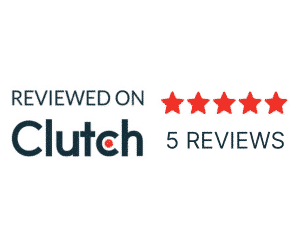With consumer attention spans getting shorter and competition intensifying, engaging an audience is becoming increasingly challenging. The digital landscape is transforming into a more visual space. Consumers are 84% more likely to buy a product or service after viewing a video. The average individual is watching a staggering 17 hours of online video content each week or 100 minutes of digital video per day.
Despite these statistics, a 2021 survey of marketers found that only 3% of brands create consistent content on YouTube.
Video content is not just the future of SEO, it’s the present. This almost untouched format deserves a prominent place on every brand’s content calendar.
Learn about the importance of leveraging video for SEO and read our best practices for efficient and effective video content production.
Why Video?
Video, in all its forms, is being underutilized by marketers who are seeking to drive organic traffic. Integrating video into your marketing strategy is a great way to create high-quality, easily digestible content that shows off your product.
Whether short-form social media clips or longer explainer videos on YouTube, video's versatility is unmatched. For SEO purposes, video is particularly impactful on landing pages, contributing to an 80-86% increase in conversions.
When done correctly, video yields multiple SEO & CRO benefits, including
- acquiring backlinks
- improving user engagement
- increasing time spent on the page
- driving conversions
Videos are adaptable and can cater to various goals, from informational and funny to explanatory and brand-focused.
Additionally, mobile campaigns benefit greatly as 70% of video content is viewed on smartphones. Video can be a much more shareable form of content, which, when done right, creates a viral flywheel and helps to expand and build an audience.
Google and Video Content
Google thinks people prefer watching videos and try to display them on SERPs whenever relevant (particularly for informational or educational queries). Engagement is just one of many metrics that Google considers for ranking, but it’s an important one.
In 2013, Google released Hummingbird, a new search algorithm focusing on the ‘why’ behind users’ search queries instead of the exact keywords they were using. Hummingbird started the shift to displaying more video content on SERPs in response to user intent. Google learned that many users were seeking visual responses for their problems. This was especially true with queries of “how to”, “what is”, recipes, reviews, and more.

If you’ve ever needed a demonstration or are looking for a “How To,” chances are you’ve seen video results pop up at the top of your SERP (Search Engine Result Page).

These SEO-rich snippets enhance a brand’s visibility and, in Google’s eyes, help deliver a diverse range of content types in search results. Google aims to give both an informative and visually appealing search experience that caters to all different types of users. Properly marking up your video with schema is just one of the ways to optimize your video content for search engines.
Landing Page Video
A video on a landing page makes it 53% more likely to show up on page 1 of SERPs.
Deploying video on your landing pages also helps to increase the time a visitor spends on the page. This in turn promotes a lower bounce rate. 120-200 words of a blog equals approximately one minute of video. This means that 1,500 words of text can be watched in only 10 minutes. Depending on the content topic, users may be much more likely to watch a video of this length than they are to read an article of that length, meaning you might convey your product or service more productively via video.

Our client, battleface, does a great job of utilizing video on many of their resource pages. They integrate explainer content both directly onto landing pages and on YouTube to help explain their product benefits and coverages. They focus on answering common questions travel insurance consumers may be asking.
Not only do these videos have the potential to show up in YouTube SERPs, but they may also drive more people directly to this landing page.
Video does not exclusively need to feature a product or service to be beneficial to SEO.
With the help of Dune7, CzechTourism created a brand video campaign to keep the destination top of mind, even during the pandemic. This video brought in thousands of views within the first weeks of the campaign and increased branded search and awareness for the destination.

Expert Tips for Video Content Creation
Use PAA to come up with topics.
While video can work for almost every brand, it can be hard to come up with unique topics. If you feel as if you’ve already exhausted topics on the basics, a good segment to tackle is the ‘People Also Ask’ box in Google.
PAA is the search results from Google that display several queries from other searches that are related to your original search. Selecting a PAA result opens a snippet from that content piece as well as generates more related queries.
Only 7.6% of PAA results contain video according to a 2020 SEMrush study.
But this isn’t because Google doesn't want to answer the query with video. It’s more a reflection of the availability of such content. Google tends to favor video responses as seen with other types of search queries - which creates a lot of potential for a content strategy focused on targeting such PAA results.
Know your audience.
Knowing your audience is important enough to begin with, but it can be especially helpful when creating video content. Younger consumers who have been brought up in the age of TikTok and Instagram reels prefer shorter, bite-sized content modeled after social media platforms.
Under two minutes is best when targeting a Gen-Z audience. It’s important to catch the attention of your audience within the first few seconds. If your video does not make an initial impression, a Gen-Z audience won't stick around, no matter how short the content is. Using high-quality production and original content is important as well as making sure to answer the question quickly and concisely.
Baby boomers and older generations don’t mind watching longer-form video content. YouTube is the most popular platform for video content for this demographic. As they have been brought up in the traditional age of TV news for information, older consumer cohorts want their video to be thorough. They don’t want to keep searching for the answer to their query.
Content Splintering
YouTube has become more than just a casual video platform; it’s a search engine of its own. YouTube sees approximately 122 million users a day and is the perfect platform for longer-form videos. While YouTube as a search engine has its SEO opportunities, one of the best ways to optimize this type of content is through a concept called splintering.
According to video SEO expert Atiba De Souza, splintering is taking longer-form videos and splitting them into segments based on questions consumers are asking related to the topic. This not only helps you in creating content, but it can also help you rank on Google for multiple questions stemming from one video.
Optimizing Video Content
Best practices for video content align with those for written content but with additional considerations. As you would optimize any article for your blog, the following aspects of video optimization should also be considered:
On the front end:
- Keyword research is just as important for video to understand the search intent of your target audience
- Relevant tags and titles help drive the discoverability of your content and can be used by video platforms for categorization
- Optimizing your description allows your audience to have an idea of what your video is before they start watching it, which is important in establishing trust and increasing CTR.
- Allow users to ‘opt-in’ to play your video once on site. Autoplay can be annoying if it otherwise interrupts or interferes with a user’s journey.
On the back end:
- Effectively mark up your video with schema to provide search engines with additional metadata that can be used on SERPs.
- If your video is embeddable (which can help improve searchability of your video content) make sure to specify the URL so that 3rd parties can embed your video as well.
If you are self-hosting your video content, make sure to include your video in your XML sitemap. For the video to properly index you must include any necessary video tags (ie. “video:content_loc”) and submit it to Google for validation.
Optimizing your video for mobile (by keeping it short, interesting, and using the right aspect ratios) as well as making sure it is accessible by including closed captions will also help boost your SEO. Sites like YouTube use speech recognition technology that can automatically add captions to your video. Otherwise, you might need to upload an SRT file that contains the captions.
“Cut!”
Video is an important tool to use in any organic marketing strategy as ranking on page 1 of SERPs is getting increasingly more competitive. Video is an almost untouched opportunity for SEO that when done correctly, can help boost ranking, build authority, and gain the trust and attention of your audience.
If video is not your expertise, it might make sense to partner with an agency. Although video for SEO may still offer a lot of opportunities, it is not an entirely new concept of course. The right agency can bring you up to speed quickly and efficiently.



No comments.